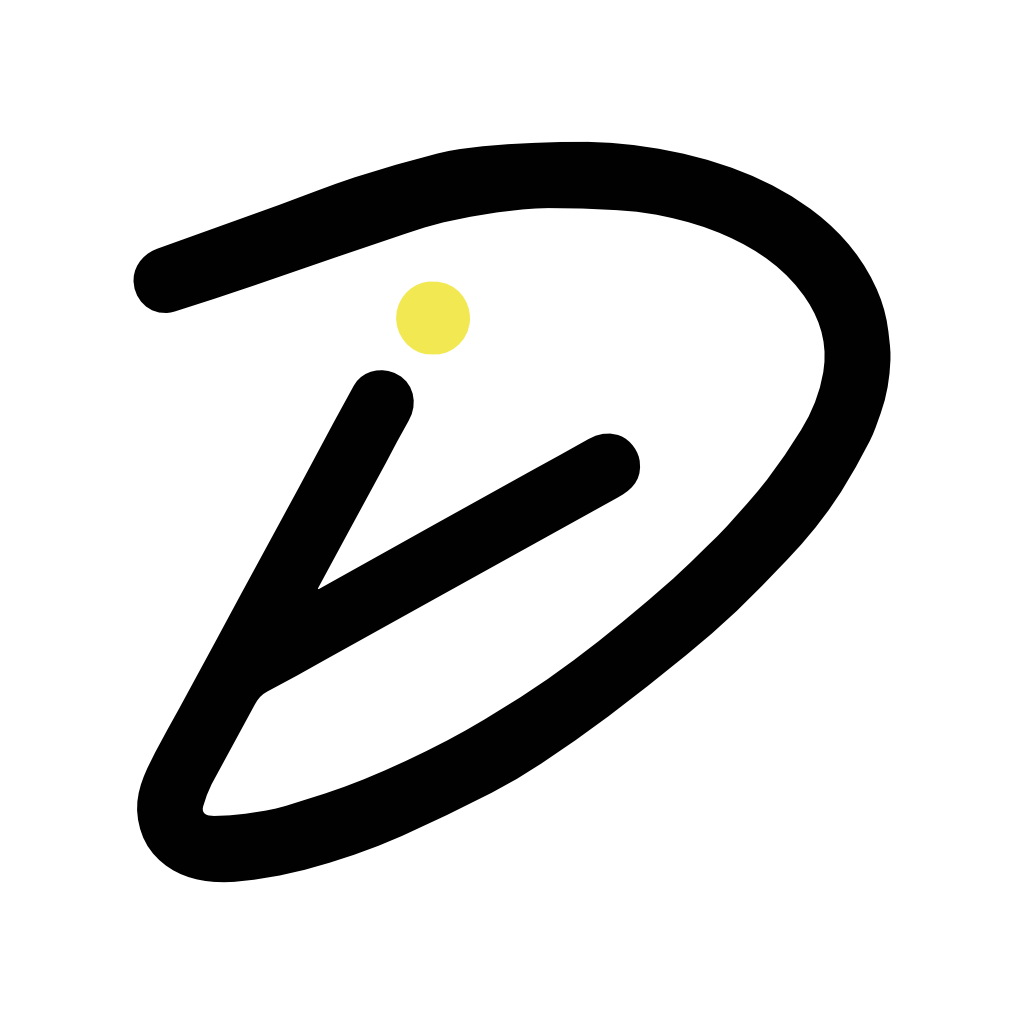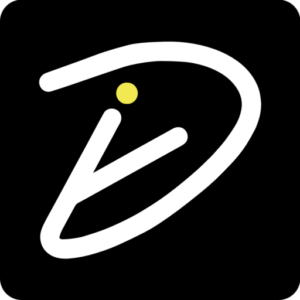
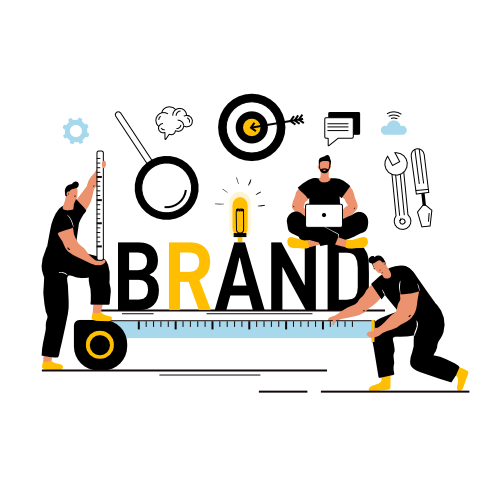
One of the most common questions I’m asked as a Graphic Designer is “What’s your process?”. As it should be. Every client deserves to know what they’re in for when working with a designer (or agency) and how it leads to a great result and money well invested.
A general 6-step synopsis is included in my Rates & Services PDF I send when someone new reaches out. But being inspired by Smith & Diction’s design process post, I felt it was time to go more in-depth with my own process for brand identity. So, this is it.
For the Designers, you can find a much more in-depth look at my logo design process in my book Starting With Concept & Finishing With Style (currently ebook as all prints are sold out) here.
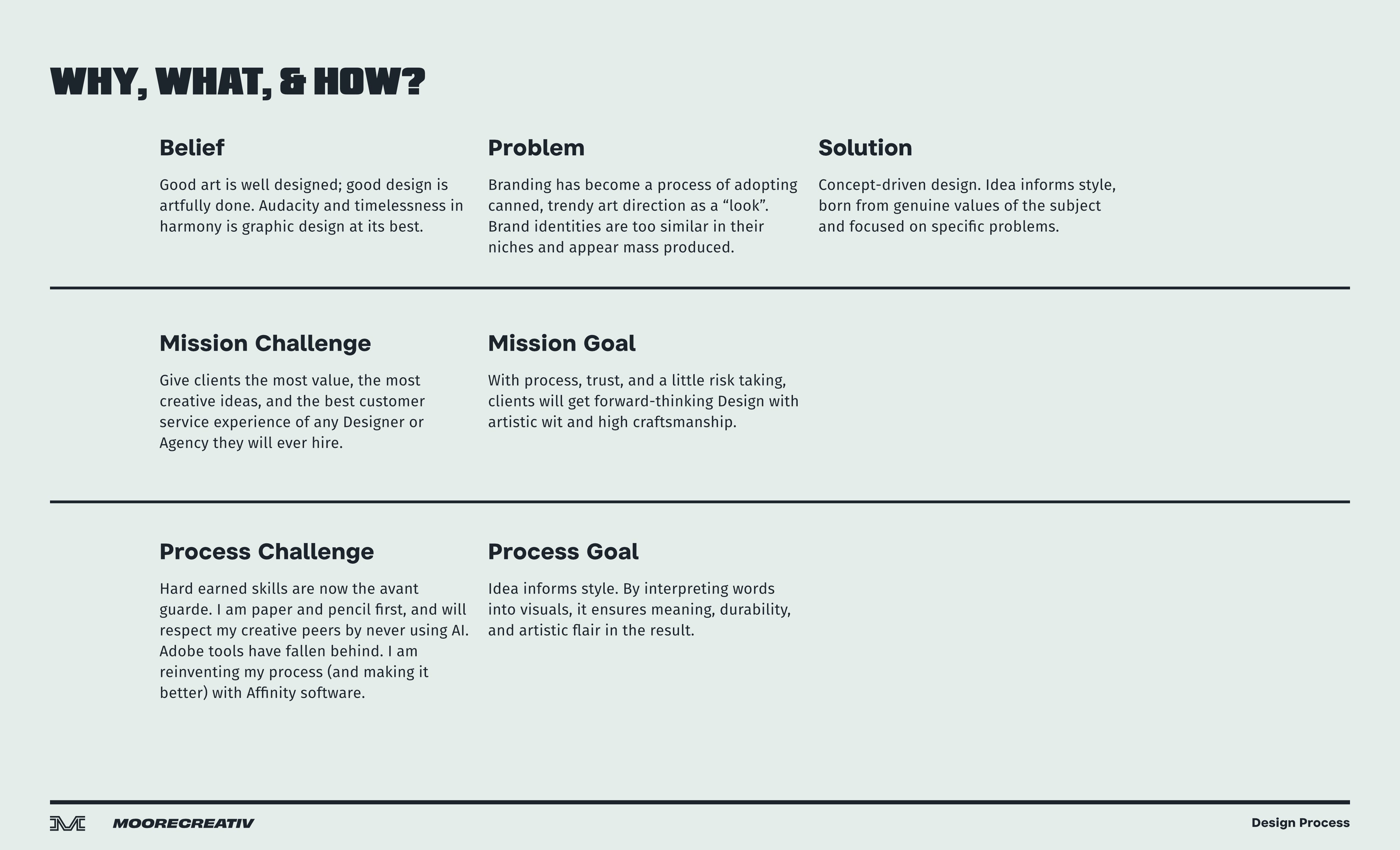
I want to start with the above slide because it’s new for me. It will be included in my proposals and/or rates sheet this year. I want to give potential clients a better understanding of what they’re in for when working with me. I’m not a Production Designer or someone who does every type of project. I’m niching further down as I’ve developed a creative voice that isn’t the right fit for everyone. It is important to collaborate with people who align with that.
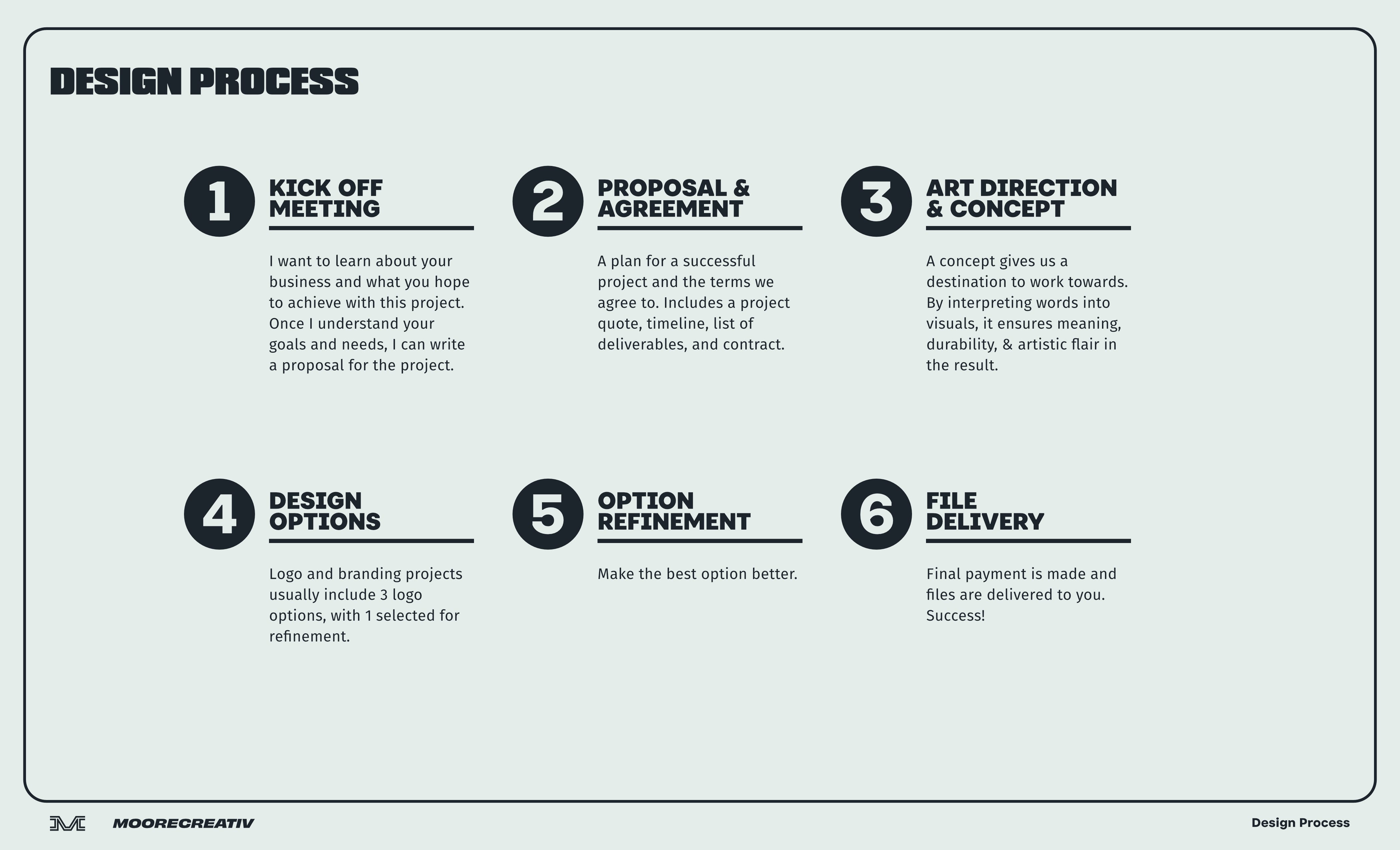
1. Kickoff Meeting
I prefer doing this with Google Meet, but am flexible for whatever others are most comfortable with. Sometimes its another video conference platform, sometimes a phone call.
These calls should be casual as possible. It would be more appropriate to call it a kick-off conversation rather than “meeting”. That sounds so corporate! I want to hear about your project, your needs, goals, why the project is important to you and so on. This will help me write a project outline or proposal.
Communication from there is through email until we need to meet again, and probably with Renee (my Project Manager and sister) on the chain. She’ll handle most of the non-design business.
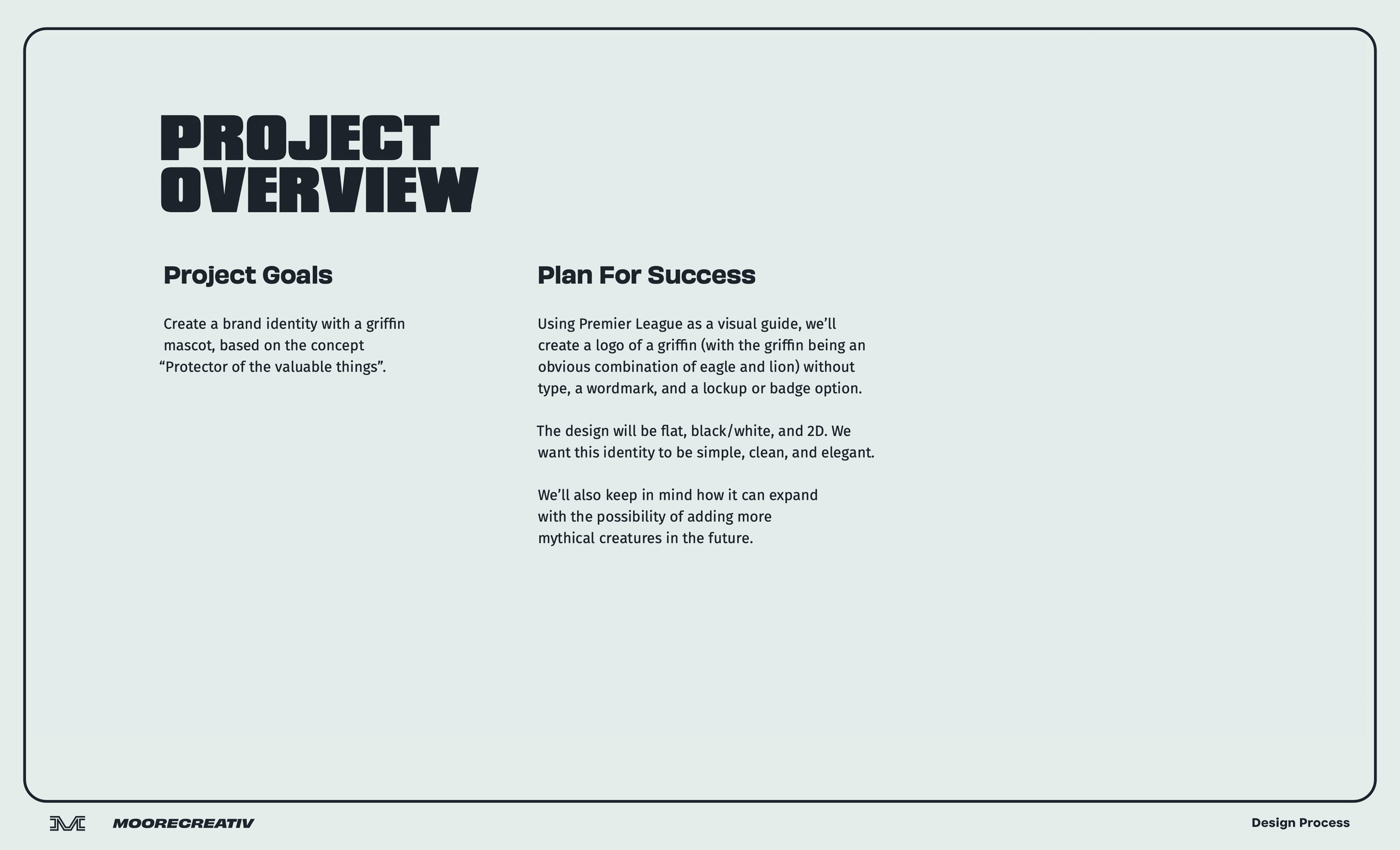
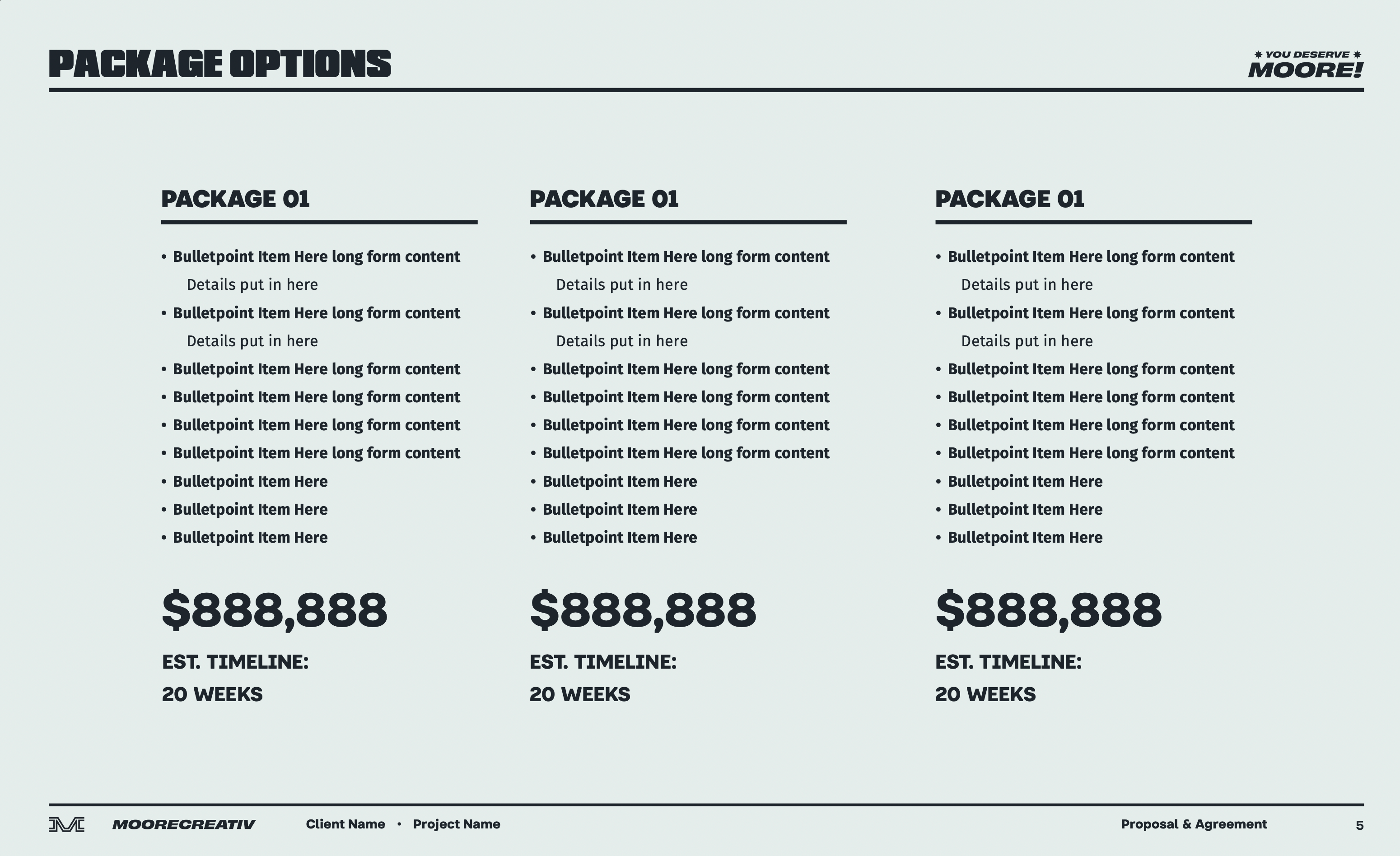
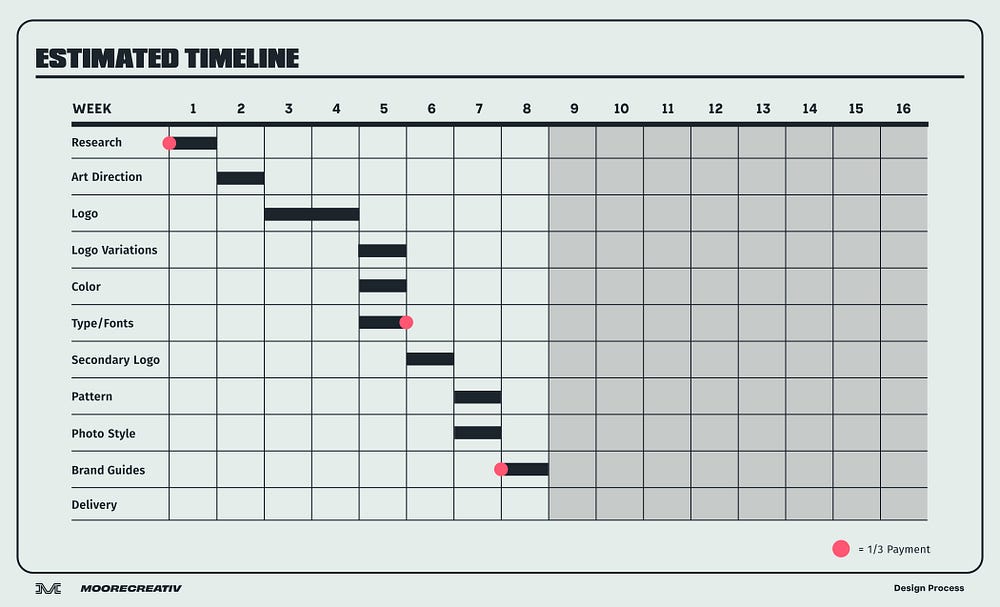
2. Project Overview
The overview includes project goals and a plan for success. This is developed from our kickoff call. It gets everyone on the same page and serves as a reminder of what we’re trying to accomplish. I prefer this to a more formal project brief because its simplicity easier to understand. I’m a believer in shunning any bloated qualities of “big business” and always looking to make my process simpler for everyone.
Timeline
On the timeline, there is emphasis on “estimated” here. There are many reasons why a timeline can get off track but if we have a hard deadline, I expect to meet it. I’ve also found it’s much better for me to see a timeline laid out like this (above). I can’t really explain why, but using a calendar or project management software just doesn’t allow me to understand long lengths of time as well.
Agreement And Project Outline
One thing I believe I do differently than most is include a contract along with the proposal/outline. This is to make the onboarding process faster. It just saves everyone time if the project moves forward. If you (client) agree to the proposal/outline, you have all the information you need to sign, pay, and get things moving from there.
Deliverables
Included in outlines are project quotes or package options with a list of deliverables. Think of the Overview as why we’re doing the project and the Outline as what we’re doing.
Proposals expire 30 days from delivery.

Art Direction And The Death Of Moodboards
This is usually where moodboards are developed and presented, but I may be done with them. They have been useful for me in some ways, but often run into problems with clients understanding the purpose. Sometimes clients see things differently than designers and develop their own expectations that don’t match. I believe this is because graphic designers have a standard practice of being too abstract with moodboards. If you look how architects or interior designers make them, they pull samples of actual materials and colors they intend to use. Graphic designers are not taught that. Instead, we build a vibe and ask the client to imagine something like it but different. It doesn’t make sense.
Moodboards are also time-consuming. I once spent a month working on 3 of them and it felt like such a waste of time.
Another issue is feeling tied to them. Moodboards set up an expectation that everything I design will be pulled from them — all design must be tied back to the moodboard because that’s what the client is buying into. “This doesn’t look like the moodboard” is a sign something has gone wrong, or for the case I’m making, wrong with the process.
It doesn’t leave enough room for creative left turns, development, and originality. Again, good for interior designers—not graphic designers. I do like how the moodboard came out for ICLV23 (above) and can see it being a helpful part of process, just keeping it for myself.
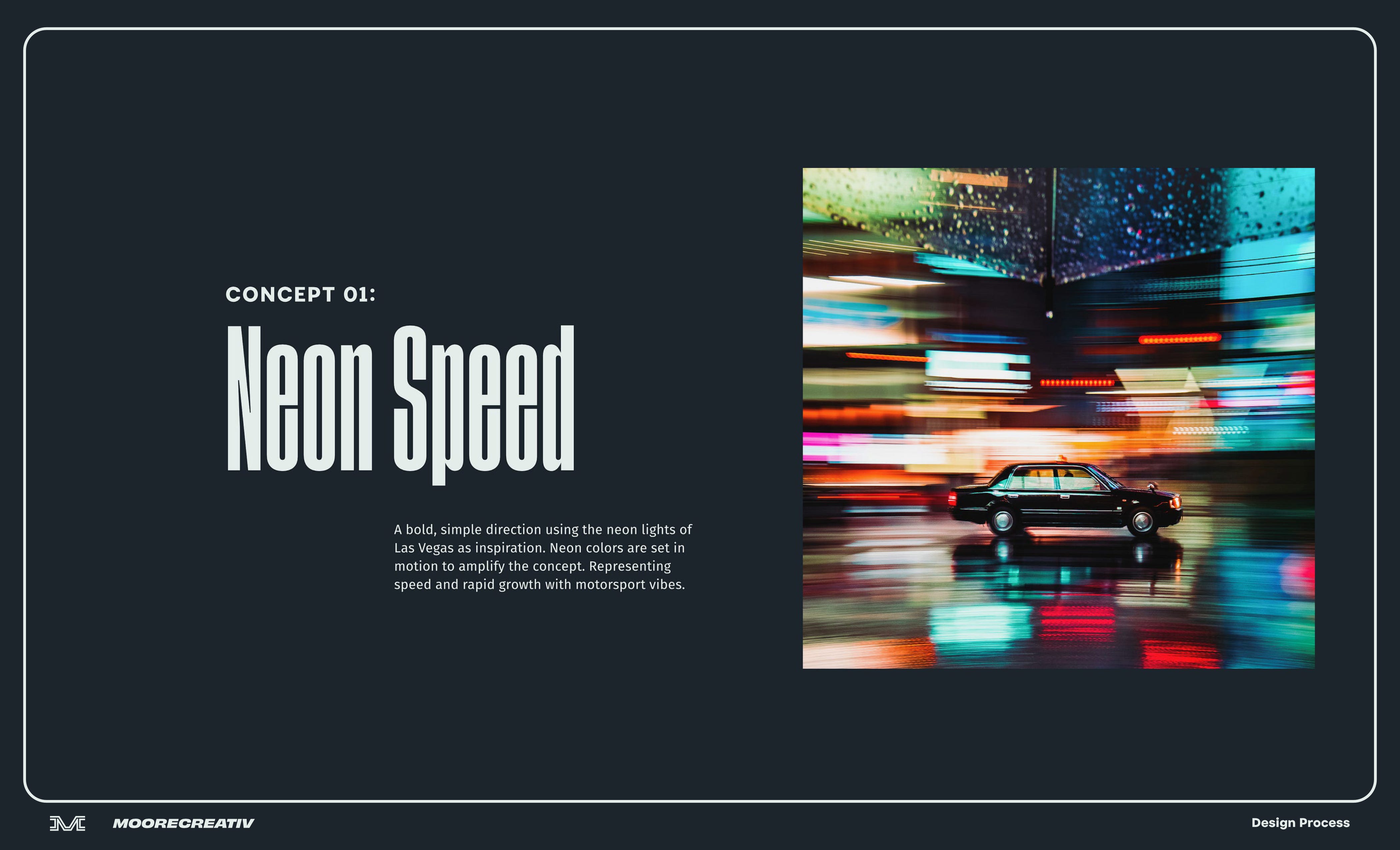
3. Concept-Driven Design
So going forward, death to moodboards! It is all about developing concepts, then exploring the concept with parts I intend to develop. In my process, a concept means words (descriptors, values, actions, physical qualities, etc) distilled into visual elements. Many times the concept stems from the product or business name.
Using Inman Connect Las Vegas as an example, the “Neon Speed” concept started with the client’s request to do a simple, bold motorsports kind of take for their brand identity. They had an idea of how they wanted it to look and good reason for it, representing a fast paced real estate market. I just needed a way to tie that into the event’s host city and find reason for every design decision from there. The event would also be timely, a couple months ahead of the 2023 Las Vegas Grand Prix.
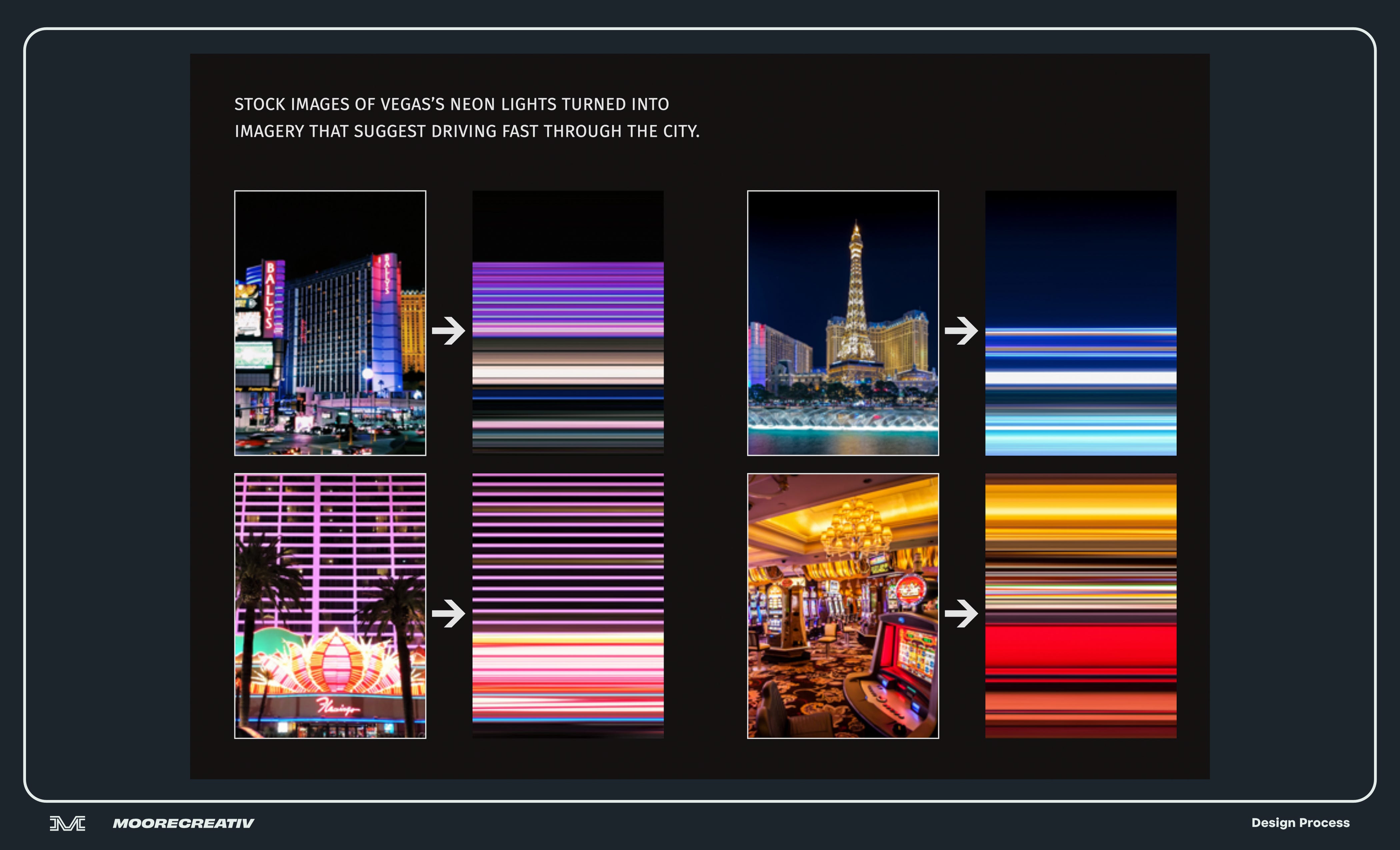
In developing the concept, I thought about how often neon lights are used in Vegas identities. It’s a well of inspiration that seems to be running dry. But I was still intrigued and believed there has to be a way to use neon lights in a new way.
I thought about what I might see if I drove down the Vegas strip at night in a race car. Everything would be blurred. There would be lines of neon. I thought that was a start and we could amplify the neon angle by using actual neon colors. That would be very eye catching in print.
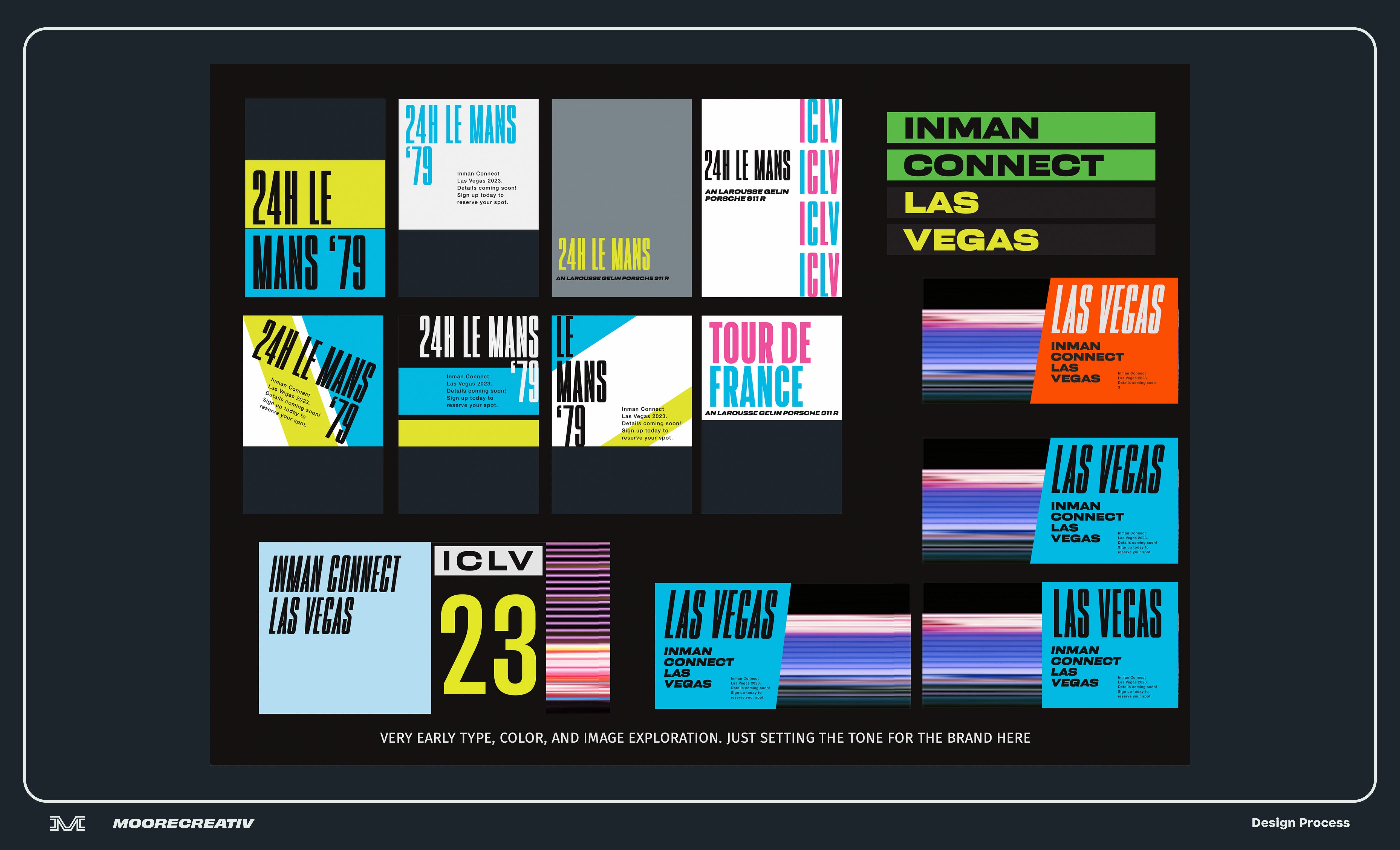
4. Design Options: Type, Color, and Image
The traditional way of developing brand identity is to start with a logo. Maybe it’s in black and white and the next step is to choose color, then type, then images, and so on. I think this is the wrong way to go about it. I find it best to start wide and work my way into detail. Logos are details. But color and type are the foundation of a brand identity.
The slide above is also from the ICLV23 project. I had the concept and some ideas about how to pull it off with help of reference images. I needed to explore how this identity might begin to come together in context. I pulled neon color swatches and used them with a few “neon speed” images I created while also exploring font options.
This stage of exploration is what really replaces moodboards. Clients can now see exact ingredients being considered and how the concept is starting to come to life. I will do an exploration similar to the above for each number of concepts we agree to.
Important Note: I often use fonts that will need licensing. I highly recommend using high quality fonts and licensing fees are well worth it for most brands. There is always the option to find something similar that doesn’t require licensing, but fonts are like furniture. Two pieces might look similar from afar, but one could be of high crafted quality, the other cheap and shoddy.
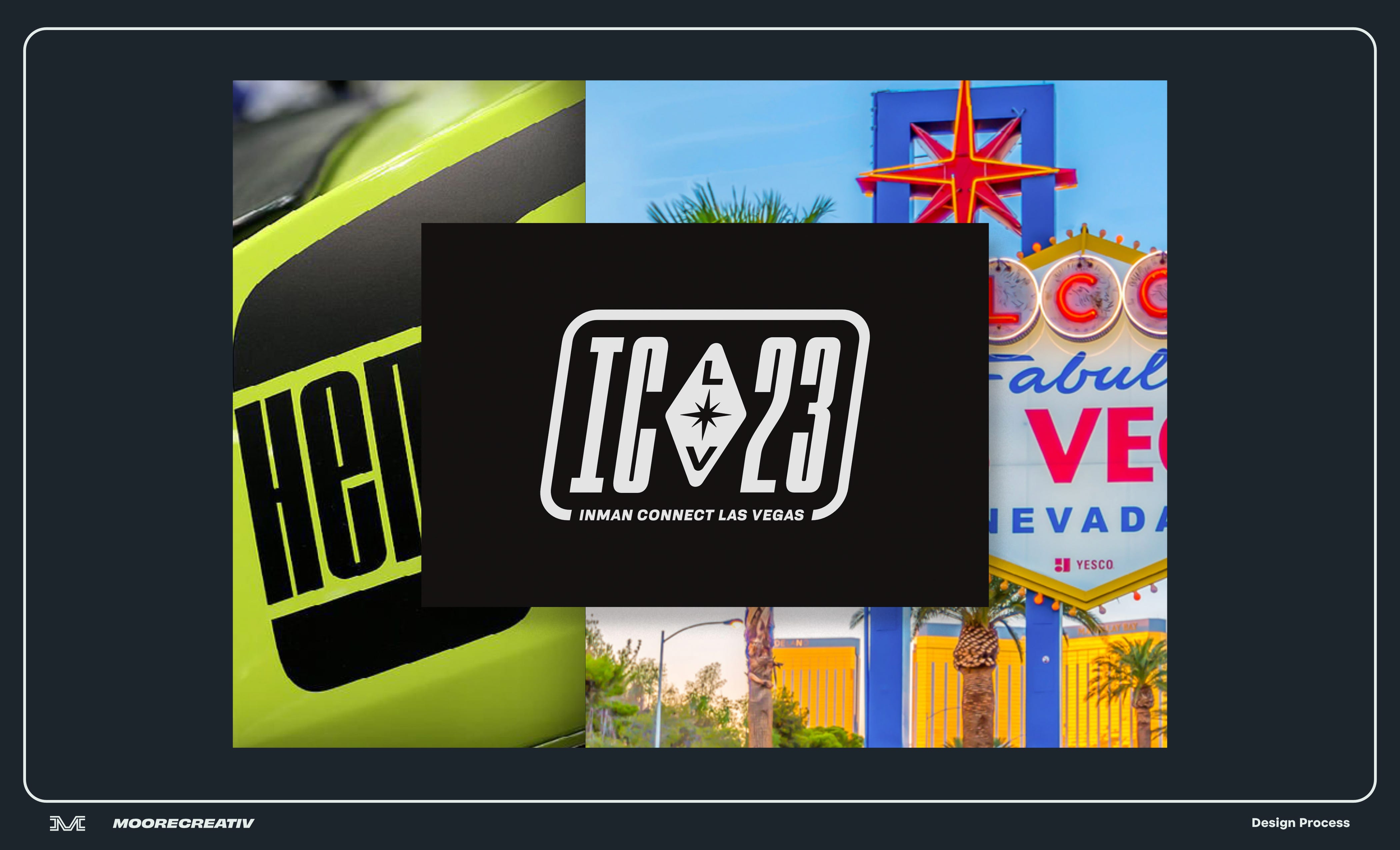
Logo Design
Typical logo and identity projects include 3 logo options. I’ll present each one in context using relevant mockups. It’s always best to see how logos will live in the real world, not just on a black or white background.
But if the project calls for exploring a lot of options, then in the interest of time, I’ll present them next to one another on a page until we can narrow them down to a few. Whether it’s 2 or 10 options, I want each one I present to be significantly different from the other. You shouldn’t have to look too hard to find the differences. Any minor alterations created in the process fall on the Designer to cull the best.
If we’re making multiple logos (a secondary or wordmark) those will follow a similar process. Development for those begin after the primary logo is chosen and approved.
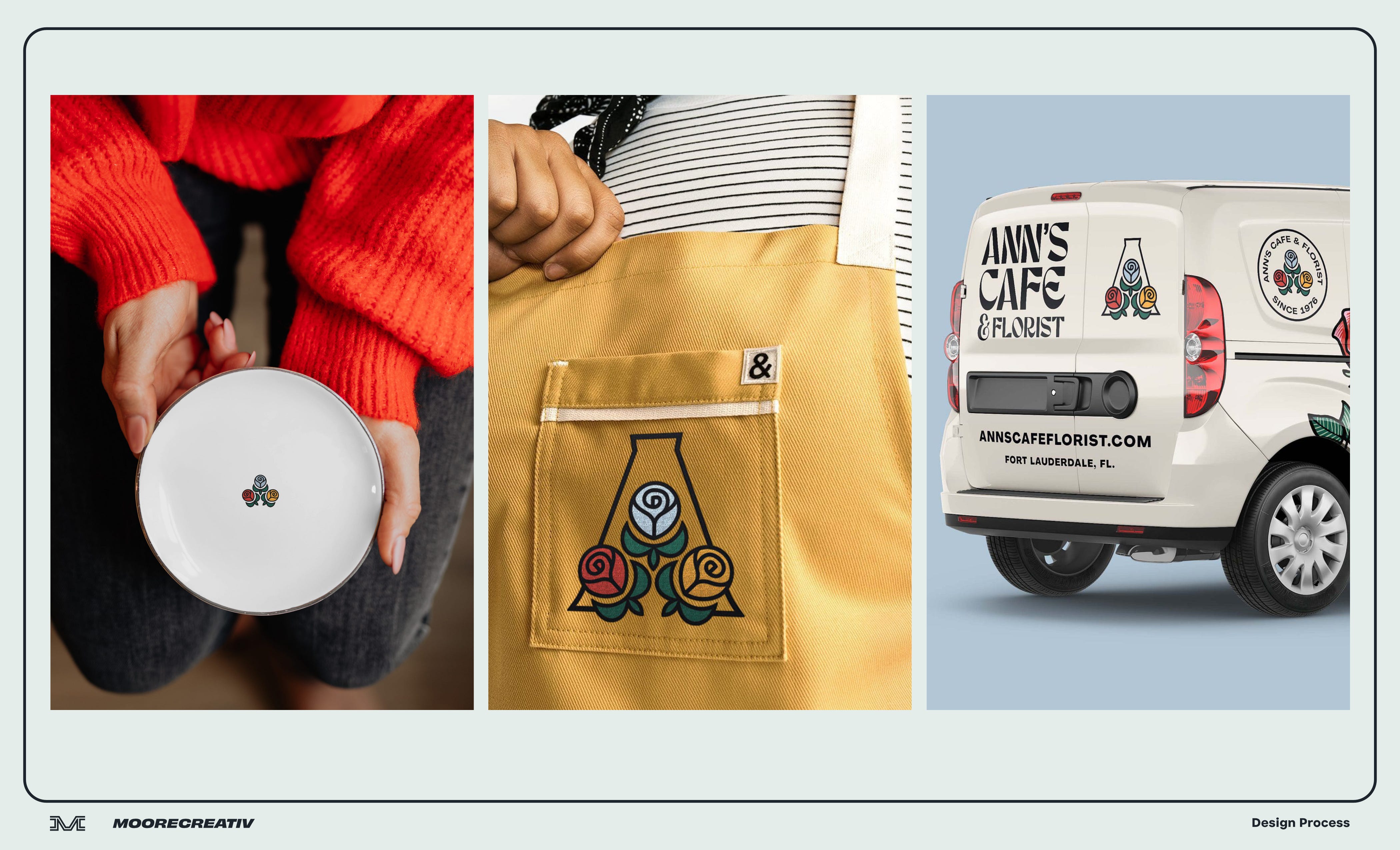
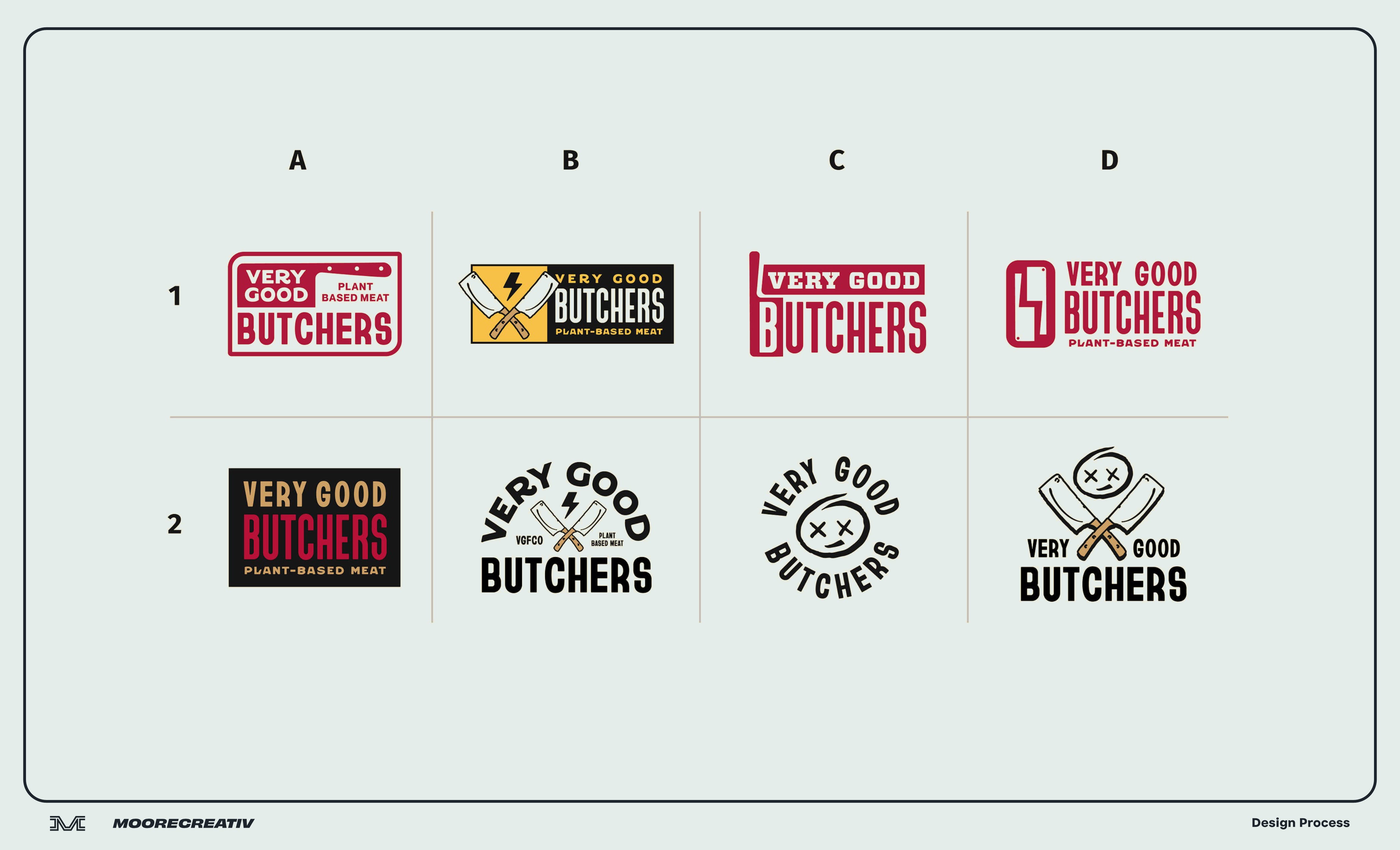
5. Option Refinement
Don’t panic if you don’t like what you see on round one. Live with it for a few days, get others’ opinions on it, and let’s regroup to continue the process. I would wager 99% of good design is a result of an evolving idea being crafted over time.
I put it on myself to always show the best work I’m capable of showing so we don’t have an endless loop of revisions. However, revision caps are important. The standard cap is 3 rounds. No one wants to spend months on revisions. Everyone loses energy for the project and feedback sometimes isn’t focused. Having a set number of revision rounds gets everyone involved to think hard about the next decisions and steps. It also emphasizes the importance of concept and all the work we do early on. If we start with good ingredients, we have a better chance of making a good dish at the end.
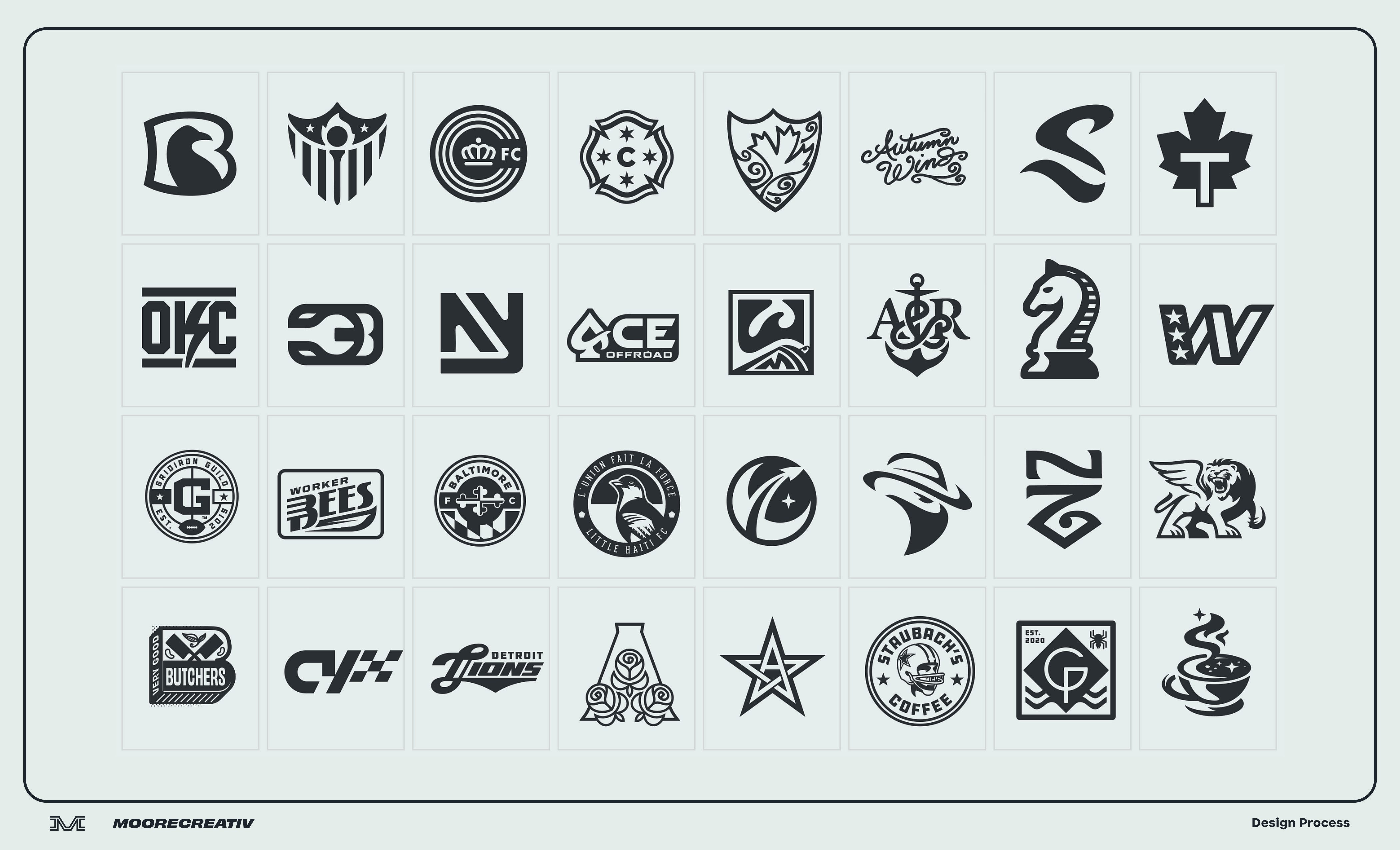
6. Delivery
Before I deliver anything, I’ll spend a day or two making final adjustments that you probably won’t notice or care about, but it will bug me if I don’t fine-tune it. Once all the deliverables are checked off, it’s time for the final invoice to be paid. Once paid, I’ll deliver all the files you need. Typically for logos, its vector (EPS, for print) and raster (JPG and PNG, for web) files. Copyright for the work transfers to you with permission for me to display and promote it.
—
I want all my clients to know I don’t disappear after the project is done! If there is ever a small mistake I didn’t catch or a file that needs updating, I can likely remedy that quickly. Some have asked if they have to pay additional fees for those sort of things— you do not.
I also love to hear how people are using my design and if it’s working for them. Please let me know how the identity is performing on your end or any other questions you have at all. Hopefully, we’ll connect again on another project.
Soruce : Medium by Brandon Moore
